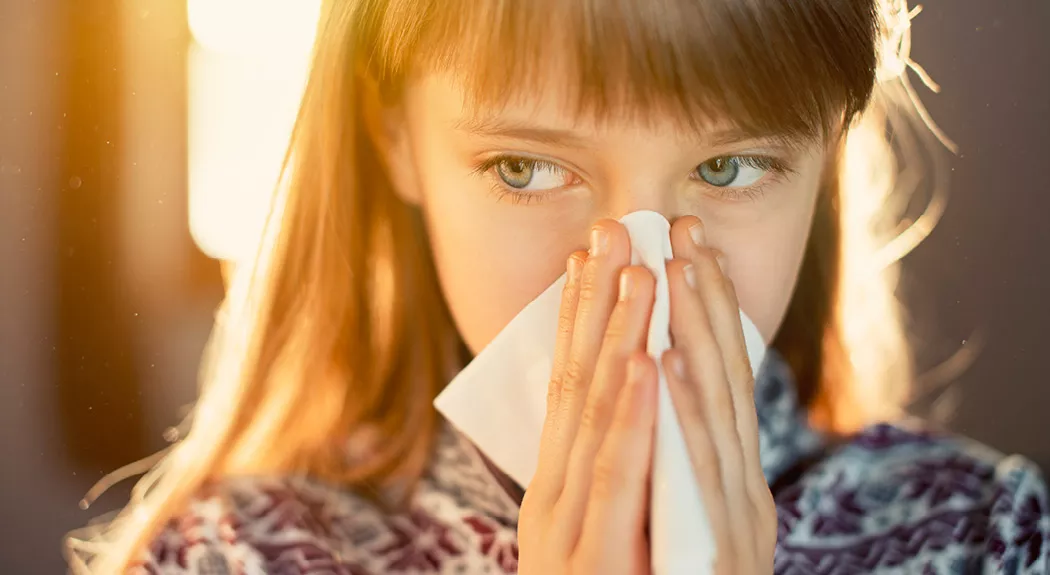by Luminis Health

Respiratory syncytial virus (RSV) is a common respiratory virus that, for most people, isn’t too different than having a mild cold. But for babies and toddlers, RSV can lead to longer-lasting complications and hospital stays. After a historic dip in cases last year, there’s now a surge in RSV bringing young children to the hospital. Here’s what to watch for if you have a little one.
What is RSV and why is it surging now?
RSV usually peaks in the winter. It’s contagious and spreads like a cold between people and on surfaces. It’s possible that last year — when lots of us stayed home, wore masks, kept our distance from each other and sanitized all hard surfaces — the virus didn’t have much of a chance to get passed around. However, it became widespread extra early this year as we eased up safety measures over the summer.
If you get the cold- and flu-like symptoms of RSV, you’ll usually feel better on your own in a week or two. But it can be worse in very young children and older adults, whose symptoms can become severe and make it hard to breathe. Every year, nearly 60,000 children younger than five are hospitalized for RSV.
Signs to look for (and how to tell it’s not COVID)
Adults can get RSV and not show any symptoms, but infants and young kids almost always do. Common RSV symptoms can include:
- Cough
- Congestion
- Fever (100.4 or higher)
- Fussiness
- Irritability
- Poor feeding
- Runny nose
- Sneezing
Most kids feel symptoms for five to seven days, and almost all will clear up on their own at home. However, it’s important to be aware that a diagnosis of RSV can develop into bronchiolitis or pneumonia — and these two conditions can seriously affect the lungs. Watch carefully for signs and call your doctor right away if you see:
- Belly breathing or tugging between ribs or at lower neck
- Fast breathing or trouble breathing
- Flaring of nostrils
- Head bobbing with breathing
- Wheezing
If you think your child has RSV, it’s a good idea to check in with your pediatrician. You should also call right away if they get dehydrated (with fewer than one wet diaper every eight hours), have a greyish or bluish color to their tongue, lips or skin, or become much less alert or less active.
Since RSV shares many of the same possible symptoms of COVID-19, the only way to know for sure what your child is dealing with is to get them tested.
How to treat RSV symptoms
Antibiotics don’t work against RSV. To help ease their symptoms, give your child some extra comfort and care for them like you would if they had a cold, while keeping an eye out to make sure they don’t get worse. You can:
- Help them stay hydrated. It’s essential your child gets enough fluid, even if they don’t feel like drinking or feeding. Nasal saline or gentle suctioning can make it easier for them to breathe and stay hydrated.
- Turn on a humidifier. A cool-mist humidifier can also help clear up congestion to help with breathing.
- Reduce their fever. If your child is older than six months and has a low-grade fever, acetaminophen or ibuprofen can help keep it down. Ask your doctor if you need help with the correct dose.
At the hospital, children with RSV sometimes need extra oxygen, medicine to open their airways or other treatments to help their breathing. Most get better and can go home in a few days.
When to take extra care
If your child was born prematurely, has chronic lung or heart disease or a weakened immune system, you can take extra steps to protect them from RSV. It’s likely what you’re probably already doing during COVID:
- Avoid contact with people who are sick
- Cover coughs and sneezes, and throw away used tissues
- Regularly clean commonly touched surfaces and toys
- Wash your hands regularly
If your child is at high risk of RSV or you live in an area with lots of cases, your doctor might also recommend palivizumab, a monoclonal antibody used to prevent RSV infection. The American Academy of Pediatricians (AAP) recommended giving out doses early this year in some areas.
Remember that RSV is common — most children will get it by the time they’re two. Kids and adults can also get it more than once, even in the same year.
This year, we can all do our part to stay (and keep one another) healthy by taking a few simple steps: Stay home when you’re sick and avoid sharing germs with babies, small kiddos and older adults. And if you need help along the way, we’ll be here to support you.



